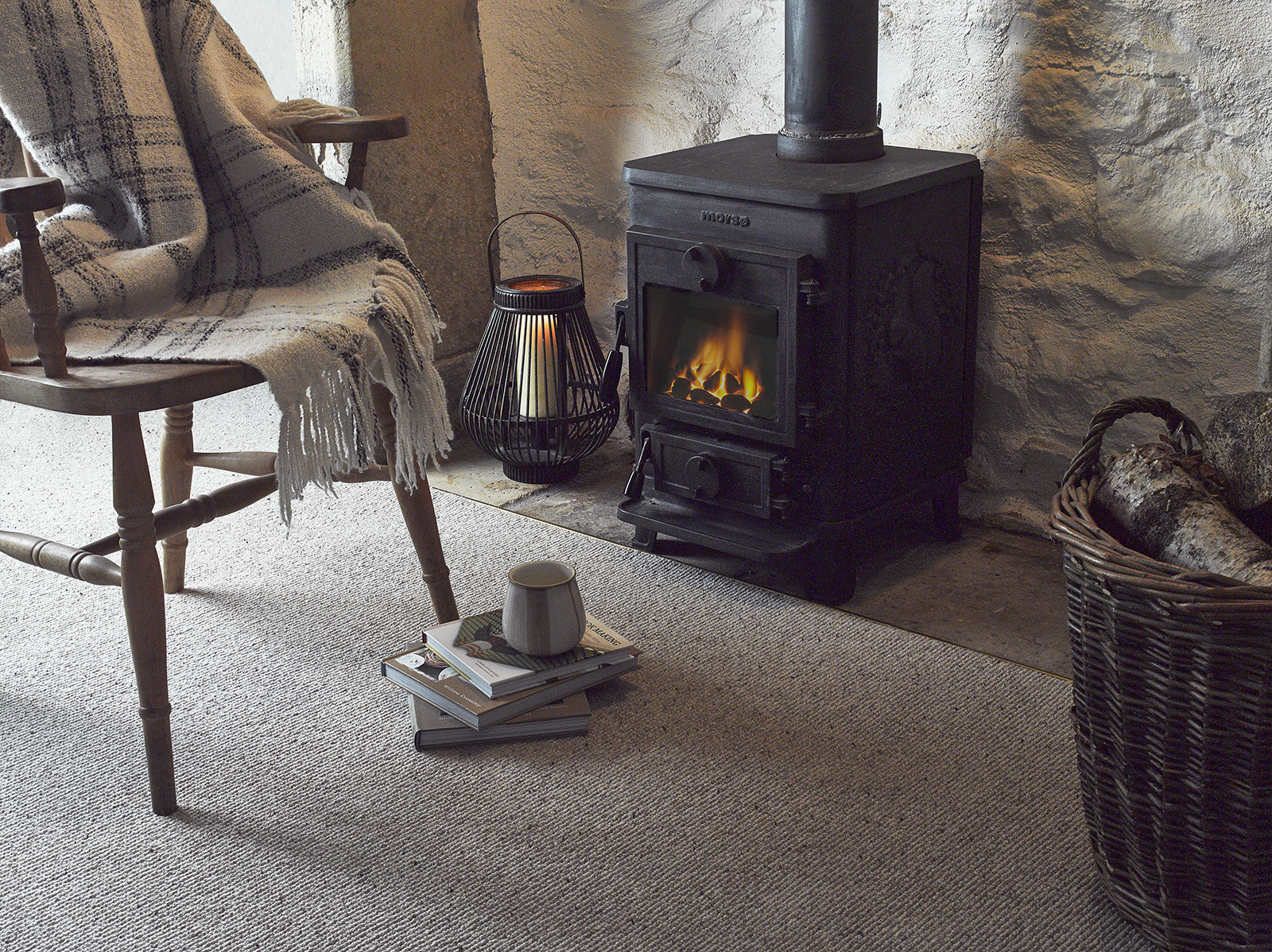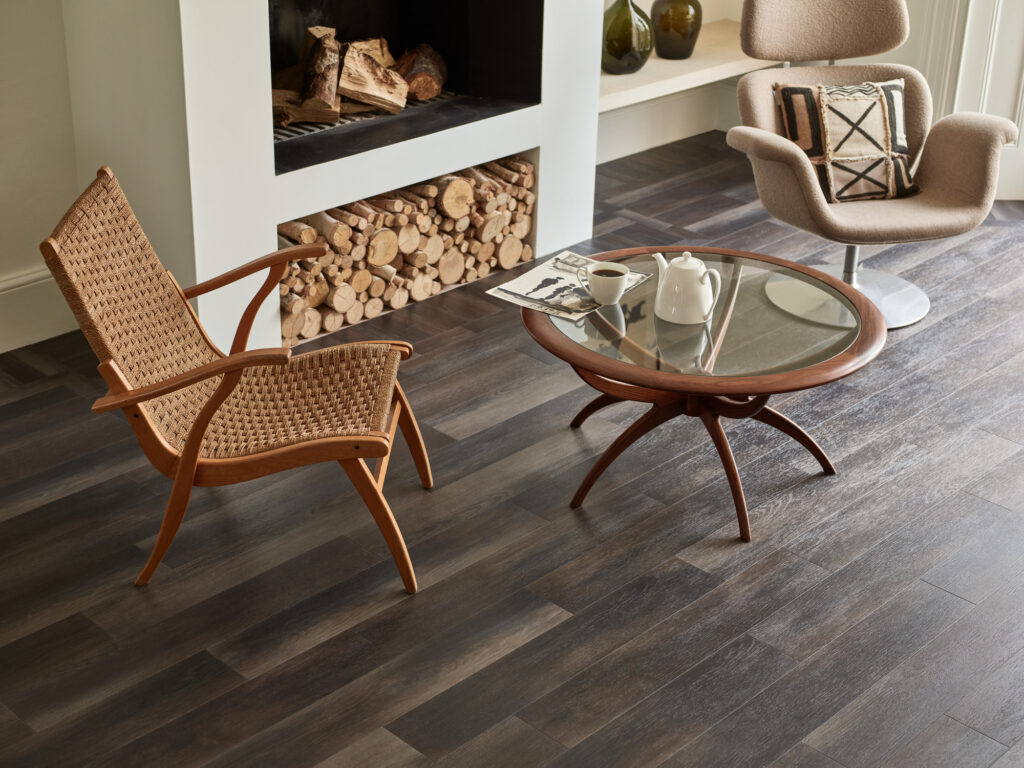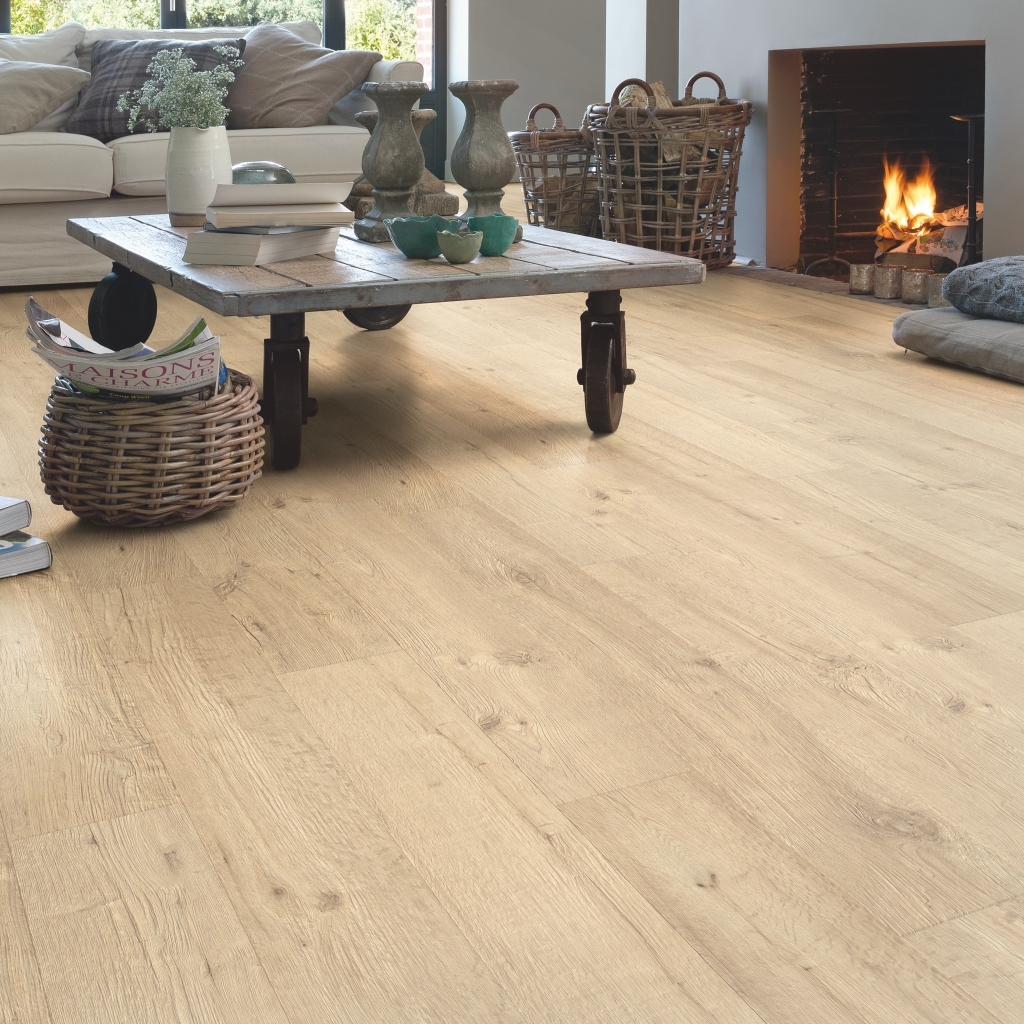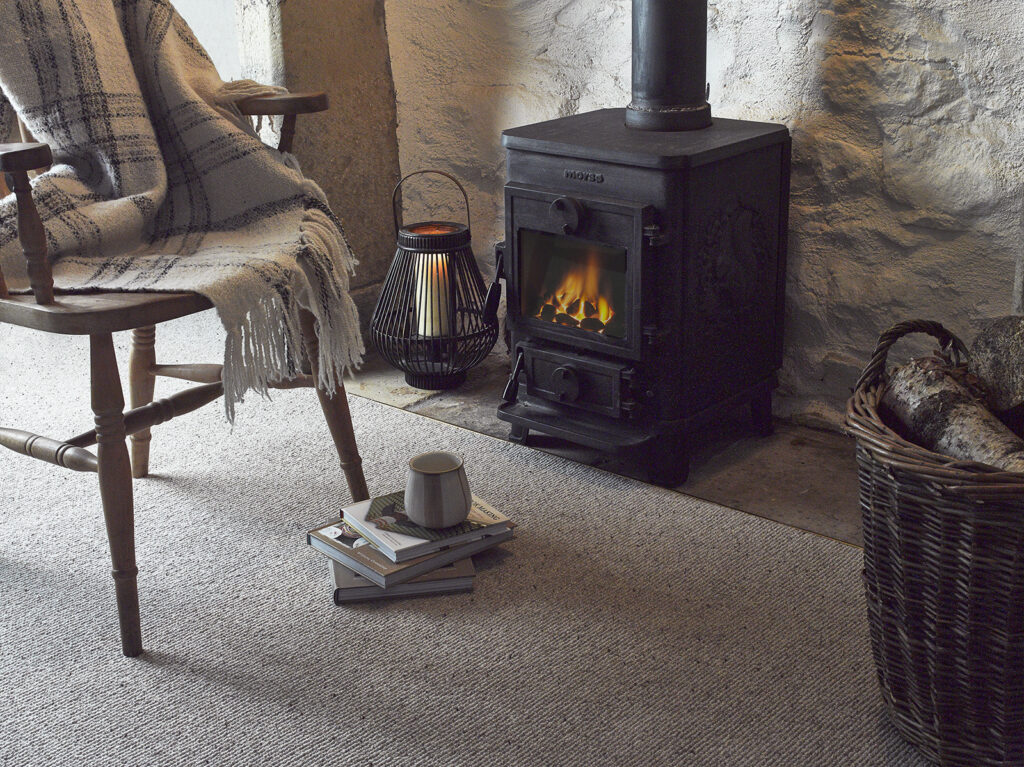Which type of flooring is the warmest?
Keep your home feeling cosy
As the seasons are changing and the Autumn chill is creeping in, (has already crept in) we are looking to feel cosy in our homes, bed down and open a bottle of red or sip on a hot chocolate to warm us on the darker nights.
If walking barefoot on cold tiles whilst en route to your first coffee of the day doesn’t appeal to you (nor does it appeal to us) we have rounded up the best flooring options that feel warmer underfoot, and create a cosy home. But which type of flooring is the warmest?

1. Carpet
The most obvious choice for a cosy, warm home. Soft underfoot – especially the luxurious velvet carpets, or a thick pile carpet. There are plenty of types of carpets to choose from and different materials to consider.
Choose a wool carpet for a natural insulator – it will help keep your room warm in the winter and cooler in the summer. The more carpet you have in the house, the more it will keep your house insulated. Need help choosing your carpet? Let us help you.
However, the warmest carpets aren’t necessarily the thickest – what you need to look for is Tog Rating.
Tog rating explained:
The higher the tog rating, the more the carpet will retain its heat, and be much more efficient at insulating. Tog ratings can range from 0.7 – 3.0.
But if you are looking to have underfloor heating you need to take into account not only the tog rating for the carpet, but that of the underlay too. A good underlay is extremely important.
‘According to research from the Underfloor Heating Manufacturers Association (UHMA) and advice from The Carpet Foundation, you should be looking for a combined tog rating of less than 2.5 for your carpet and underlay for underfloor systems to operate efficiently.’
Although carpet isn’t recommended for the wet areas (kitchens & bathrooms) you can always add a strategically placed rug to bring in a softer, cosy element to those areas.
2. Luxury Vinyl Tiles (LVT)
LVT mimics the look of natural materials like wood or stone wonderfully, but thankfully will provide a significantly warmer alternative. They’re super stylish and practical too!

Several factors contribute to this warmth; due to its multiple compressed layers, LVT offers excellent insulation, making it warmer than traditional tile or hardwood floors. It is compatible with underfloor heating systems, which can enhance its warmth even further.
The thickness of LVT adds to its cushioned feel underfoot, and it retains more heat than stone or tile, without the need for underfloor heating or extra insulation. Additionally, LVT is softer and more comfortable to walk on compared to standard tile or hardwood.
Where carpet is not suitable for wet areas such as kitchens and bathrooms, LVT is perfect for these areas. Water resistant and easy to clean and maintain make them a perfect choice for the wet areas. If you need more convincing that LVT is right for your home, let us help you.

3. Laminate
Laminate flooring is an affordable alternative to hardwood and can help maintain warmth in your home. As a great conductor of heat, it pairs well with underfloor heating systems, making it a practical option for spaces like living rooms, bedrooms, and dining areas.


Its heat retention properties enhance comfort, while its realistic wood look combines both style and functionality. For extra insulation (and style) try adding area rugs to laminate flooring this can be especially beneficial in cooler rooms.
With all these flooring options, it is important to understand the significance of a good underlay. Where money might be tight, or you need to make a small saving, we would suggest to never cut corners on the type of underlay you have..
Final tips for staying warm…
While various carpet types and materials can help retain warmth, there are a few additional steps you can take to maximise its effectiveness:
Carpet larger areas: Although carpeting isn’t ideal for spaces like the kitchen or bathroom, the more areas you cover in the rest of the house, the more efficiently it will help retain heat.
Choose the right underlay: Selecting the best underlay for your carpet is essential. It helps block drafts and adds extra warmth and comfort underfoot.
Use carpet remnants as rugs: If carpeting an entire space isn’t feasible, using carpet remnants as rugs can help absorb and concentrate heat in specific areas. Or better yet create your very own rug in the size you need.
There are plenty of ways to keep your house warm through the colder months, as well as keeping it cosy. If you can keep your house well insulated it can have a significant impact on your energy costs, so it’s well worth investing in the right flooring, underlay or even just a few rugs to keep the warmth in.

